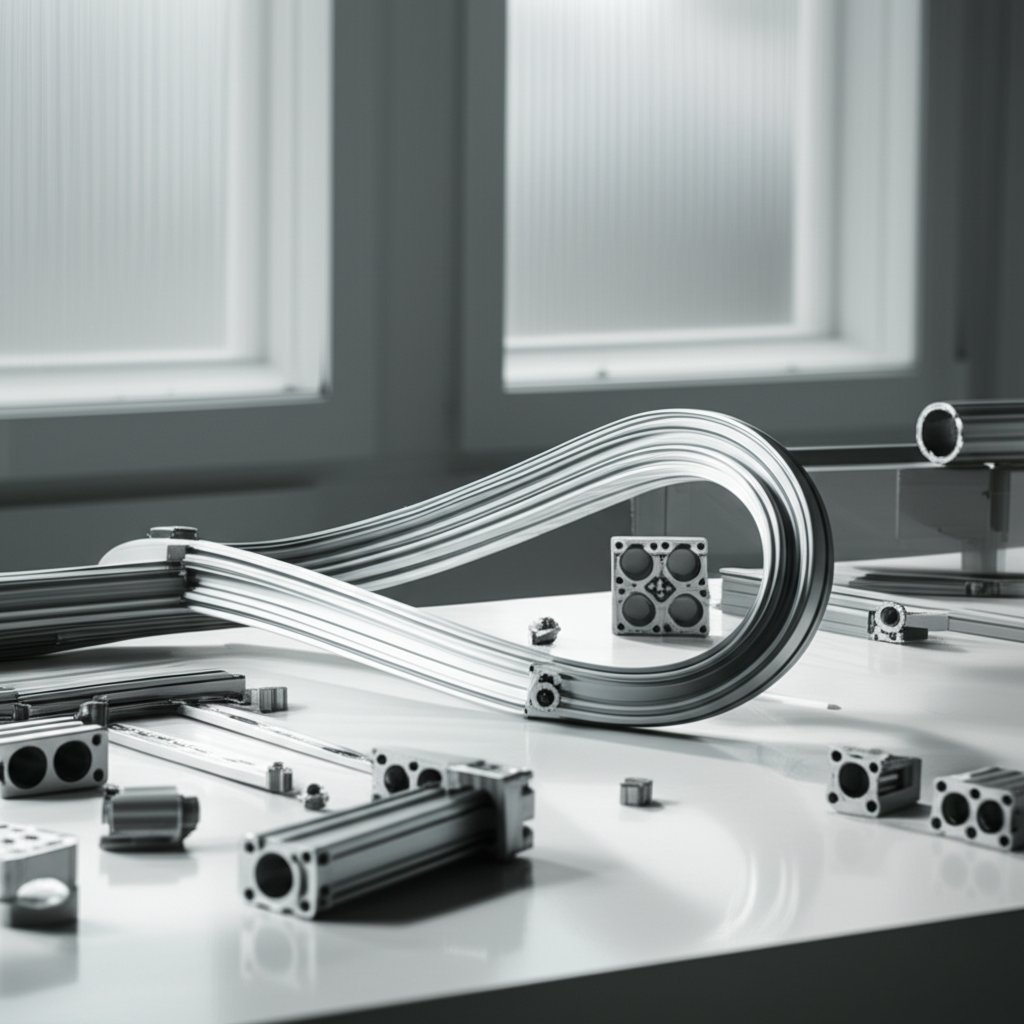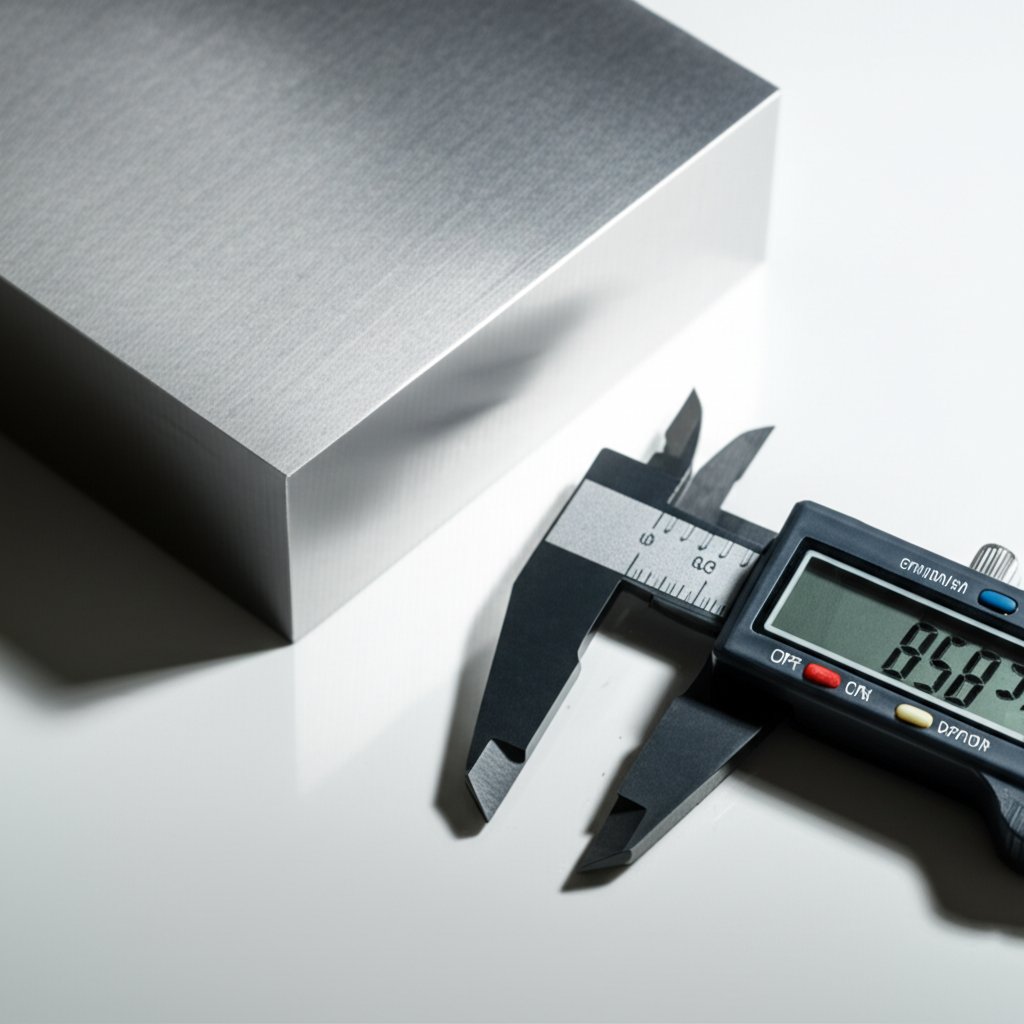
When you’re designing anything from aircraft frames to consumer electronics, there’s one question you’ll always face: How can you optimize strength while keeping weight in check? That’s where aluminum 6061 density comes into play. As one of the most versatile and widely used aluminum alloys, 6061 is a go-to material for engineers, designers, and manufacturers across countless industries. But why is its density so important, and what makes this alloy stand out?
Imagine you’re tasked with building a lightweight yet durable structure. You’d want a material that’s not just strong, but also easy to shape, resistant to corrosion, and simple to weld. Enter 6061 aluminum alloy, often referred to as “structural aluminum” because of its exceptional balance of mechanical and physical properties. Here’s what sets it apart:
But what exactly does “density” mean in this context? Simply put, density is the mass per unit volume of a material—and for 6061 aluminum, this fundamental property shapes everything from weight calculations to performance predictions. Knowing the 6061 aluminum alloy density helps you:
This blog post is your comprehensive guide to 6061 aluminum’s density. We’ll break down the standard values, explore measurement units (both metric and imperial), discuss how different tempers like T6 affect density, and connect these insights to real-world applications. By the end, you’ll have a clear, practical understanding of why density matters—and how to leverage it for your next project.

When you’re planning a project or running engineering calculations, you need quick, reliable answers. So, what is the aluminum 6061 standard density? Let’s cut straight to the facts—because having the right value on hand makes all the difference in design, manufacturing, and analysis.
The 6061 aluminum density value is officially recognized as:
This number is a constant for 6061 aluminum in most engineering scenarios, meaning you can confidently use it for weight calculations, material selection, and structural analysis. The value is widely agreed upon by global standards organizations and leading industry resources[MatWeb].
Unlike properties that can shift with temperature or processing, the density of 6061 aluminum remains virtually unchanged across tempers and standard conditions. That’s because density measures the mass of the alloy’s atoms packed into a given volume—unless you’re introducing voids or impurities, this value stays stable. So, whether you’re working with 6061-T6, 6061-O, or any other standard form, you’ll use the same density figure.
Imagine you’re designing a lightweight frame for an electric vehicle or calculating shipping costs for large aluminum panels. With the density value above, you can quickly estimate the mass of any 6061 aluminum component just by knowing its volume. This helps you:
Next, we’ll explore whether specialized heat treatments like the T6 temper affect this density—or if you can always rely on this constant value, no matter the processing method.
When you see the phrase “6061-T6,” you might wonder: does the T6 temper process alter the density of aluminum 6061? It’s a common question, especially for engineers and designers who need precise weight calculations. Let’s break it down step by step so you can make informed decisions for your next project.
First, what exactly is the T6 temper? In the world of aluminum alloys, “T6” refers to a specific sequence of heat treatments designed to maximize strength and hardness. Here’s how it works:
This process transforms soft, annealed 6061-O aluminum into a much tougher, more durable material. The result? A dramatic boost in mechanical properties, with yield strength increasing from around 8 ksi to about 35 ksi, and ultimate tensile strength rising significantly as well [Wikipedia].
Here’s the key point: while the T6 temper process changes the internal structure of 6061 aluminum, it does not meaningfully change its density. Why? Because density is defined as mass divided by volume, and the T6 process doesn’t add or remove any atoms from the material. The alloy’s composition stays the same—only the arrangement of its microscopic particles changes.
So, whether you’re working with 6061-O, 6061-T4, or 6061-T6, the aluminum 6061 t6 density remains the industry-standard value—about 2.70 g/cm³ (2,700 kg/m³). In other words, if you’re calculating weight or comparing materials, you can use the same density for all standard tempers, including T6.
Now that you know the T6 temper won’t throw off your calculations, let’s take a closer look at the specific density values for 6061 aluminum in the metric system, so you can confidently plan your next project.
When you’re working with international projects or scientific calculations, you’ll often need to reference aluminum 6061 density kg/m3 or 6061 aluminium density g/cm3. But what do these numbers really mean—and how do you use them in practice?
Sounds complex? It’s actually quite straightforward. The density of 6061 aluminum alloy is remarkably consistent across reputable sources. Here’s how it’s typically represented in metric units:
| Unit | Density Value |
|---|---|
| kg/m³ | 2,700 – 2,720 kg/m³ |
| g/cm³ | 2.70 – 2.72 g/cm³ |
These values are confirmed by multiple engineering resources, including kg-m3.com. You’ll notice minor variations (2,700 vs. 2,720 kg/m³), but either value is widely accepted for most engineering calculations.
Imagine you’re handed a datasheet listing density in g/cm³, but your calculation requires kg/m³. The conversion is simple:
So, if 6061 aluminum is 2.70 g/cm³, that’s exactly 2,700 kg/m³. This makes switching between units quick and error-free—just multiply or divide by 1,000. For example, a part with a density of 2.72 g/cm³ is 2,720 kg/m³.
Understanding these metric values lets you confidently estimate the weight of aluminum components, compare materials, and ensure your designs meet international standards. Next, we’ll look at how these figures translate into imperial units, so you can communicate density values no matter where your project takes you.
Working on a project where imperial units are the standard? You’re not alone—many engineers and manufacturers in North America rely on pounds per cubic inch (lb/in³) and pounds per cubic foot (lb/ft³) to specify material properties. But what exactly are the official values for the density of 6061 aluminum lb/in3 and aluminum 6061 density lb/ft3? Let’s break it down for clarity and quick reference.
For 6061 aluminum alloy, the density in imperial units is widely accepted as:
| Unit | Density Value |
|---|---|
| lb/in³ | 0.0975 |
| lb/ft³ | 169 |
These values are consistent across trusted engineering databases and material datasheets, including MatWeb and industry reference tables.
Imagine you have a density in lb/in³ but need it in lb/ft³ for a volume calculation. The conversion is straightforward:
This makes it easy to switch between units, whether you’re estimating the weight of a structural beam or specifying material requirements for a fabrication job.
With these imperial values at your fingertips, you can confidently communicate, calculate, and compare material densities in any context. Next, we’ll explore the science behind why aluminum 6061’s density is so consistent—and what influences it at the atomic level.

Ever wondered why the aluminum alloy 6061 density is so close to that of pure aluminum, even though it’s an alloy? If you’ve ever compared datasheets or engineering tables, you’ll notice only small differences between 6061 and pure aluminum. Let’s break down the science behind this consistency, and see how alloying elements shape the properties of 6061 aluminum—without dramatically altering its density.
Density is simply the mass of a material divided by its volume. For aluminum alloys, this value is determined by:
Pure aluminum itself has a density of about 2.70 g/cm³. When you add other elements to create an alloy—like 6061—the density can shift slightly, depending on the types and amounts of those elements. But here’s the key: most alloying elements are present in small percentages, so the change in density is minimal.
Let’s take a closer look at the 6061 aluminum composition:
Magnesium and silicon are the primary alloying elements in the 6000 series, including 6061. Both are lighter than aluminum, so their addition tends to decrease the density slightly. Copper and chromium are present in even smaller amounts and have less impact on the overall density.
Imagine you’re mixing ingredients for a recipe. If you add just a pinch of something dense, the overall weight won’t change much. The same is true here. The small percentages of magnesium, silicon, copper, and chromium in 6061 aluminum mean its density remains very close to that of pure aluminum. For example:
That’s why the density of 6061 aluminum is typically listed as 2.70 g/cm³—virtually the same as pure aluminum.
While composition is the main factor, minor variations in density can also result from:
In summary, the science behind aluminum alloy 6061 density is rooted in its composition—mainly aluminum, with small amounts of magnesium, silicon, copper, and chromium. These alloying elements give 6061 its excellent properties while keeping its density nearly identical to pure aluminum. Next, let’s see how this density compares to other common engineering materials, and why it’s such an advantage for lightweight design.
When you’re choosing a material for your next project, have you ever wondered how much weight you could save by switching from steel or titanium to 6061 aluminum? Understanding how 6061 aluminum’s density stacks up against other engineering materials is key to unlocking new levels of efficiency and performance. Let’s break down the numbers and see why this alloy is a favorite for lightweight, high-strength designs.
| Material | Density (g/cm³) | Density (kg/m³) | Density (lb/in³) | Density (lb/ft³) |
|---|---|---|---|---|
| 6061 Aluminum | 2.70 | 2,700 | 0.0975 | 169 |
| Steel (Mild/Carbon) | 7.85 | 7,850 | 0.284 | 490 |
| Titanium | 4.51 | 4,507 | 0.163 | 281 |
| Copper | 8.96 | 8,960 | 0.324 | 559 |
Imagine designing an automotive chassis, a drone frame, or a marine structure. By choosing 6061 aluminum, you’re not just cutting weight—you’re also reducing fuel consumption, improving handling, and making installation easier. The lower density means you can achieve similar structural performance as steel or titanium, but with far less mass. Plus, the excellent corrosion resistance and machinability of 6061 aluminum add further value, especially in challenging environments.
Curious how these density differences play out in real-world applications? Next, we’ll explore some of the industries and products that rely on 6061’s low density to drive innovation and efficiency.

When you picture the future of transportation, energy, or even the device in your hand, what do they all have in common? The answer: a relentless drive to make things lighter, stronger, and more efficient. That’s where the low density of 6061 aluminum comes into play. But how does this property translate into real-world innovation? Let’s dive into the industries and products that rely on 6061 aluminum applications to push boundaries and deliver performance.
Imagine building an electric vehicle that travels farther on a single charge, or a drone that stays airborne longer with the same battery. In these scenarios, every gram saved counts. Thanks to its density of just 2.70 g/cm³, 6061 aluminum enables designers to create lightweight aluminum profiles that don’t compromise on strength or durability.
In each of these applications, the combination of low density, excellent machinability, and corrosion resistance makes 6061 aluminum the material of choice for high-performance, weight-sensitive projects.
Of course, unlocking the full benefits of 6061 aluminum’s low density depends on the quality and precision of the extruded profiles you use. For demanding industries—where every detail matters—partnering with a manufacturer experienced in high-precision, custom aluminum profiles is essential. Companies like Shengxin Aluminum specialize in advanced extrusion technology and tight-tolerance manufacturing, ensuring your components meet rigorous standards for strength, consistency, and performance.
As you consider your next lightweight design, remember: choosing the right supplier is just as important as choosing the right material. Next, we’ll show you how to put this knowledge into action by calculating the weight of your 6061 aluminum components, so you can optimize every aspect of your project.

Ever needed to calculate aluminum 6061 weight for a project, but weren’t sure where to start? Whether you’re estimating shipping costs, planning a build, or checking if your design meets weight limits, getting the calculation right is essential. Let’s break it down into simple, actionable steps you can follow for any shape or size.
At its core, the process is straightforward. The universal 6061 aluminum weight formula is:
Weight = Volume × Density
Here’s what you need to know:
You’ll encounter a few standard shapes in most engineering and fabrication projects. Here’s how to get the volume for each:
Make sure all your dimensions are in the same unit system as your density value for accurate results.
Imagine you’re building a machine base using a 6061 aluminum plate. Here are your dimensions:
Step-by-step calculation:
Your 6061 aluminum plate weighs 27 kg. This method works for any shape—just swap in the appropriate volume formula.
When your design involves intricate extrusions or tight tolerances, working with a full-service manufacturer like Shengxin Aluminum ensures not only accurate weight but also flawless quality and consistency—so your finished components perform exactly as intended.
Now that you can confidently calculate the weight of any 6061 aluminum part, you’re equipped to optimize your designs, streamline logistics, and make smarter material choices. In our final section, we’ll summarize the key takeaways and show how expert partners can help you unlock the full benefits of 6061 aluminum for your next innovation. This is a blog post for your checking.
When you reflect on the journey through aluminum 6061 density, one thing becomes clear: this alloy’s consistent density—2.70 g/cm³ (2,700 kg/m³ or 0.0975 lb/in³)—is a cornerstone for modern engineering. Whether you’re working with 6061-T6, 6061-O, or any other standard temper, you can rely on this value for accurate calculations and confident design decisions. Sounds simple, but this reliability is what empowers engineers and manufacturers to push boundaries in aerospace, automotive, rail, marine, and countless other sectors.
Imagine you’re developing the next generation of electric vehicles or high-speed rail systems. Every gram matters. That’s why sourcing high quality aluminum profiles is just as critical as selecting the right alloy. An experienced 6061 aluminum supplier like Shengxin Aluminum delivers more than just raw material—they provide precision engineering, advanced extrusion capabilities, and strict quality control, ensuring your projects meet the highest standards from concept to completion.
Ready to leverage the proven benefits of 6061 aluminum for your next innovation? Connect with a trusted partner who understands the science—and the stakes—behind every profile. With the right expertise and supply chain, you’ll unlock new levels of performance, efficiency, and reliability in every application.
The density of 6061 aluminum is typically 2.70 g/cm³ (2,700 kg/m³ or 0.0975 lb/in³). This constant value is used for engineering calculations across all tempers, ensuring accurate weight and structural estimates for projects.
No, the T6 temper does not meaningfully change the density of 6061 aluminum. The T6 process increases strength and hardness, but since no mass is added or removed, the density remains the same as standard 6061 aluminum.
To calculate weight, multiply the component's volume by the density of 6061 aluminum (2.70 g/cm³ or 0.0975 lb/in³). Use shape-specific formulas to determine volume, then apply the density for precise weight results.
6061 aluminum is much less dense than steel (2.70 g/cm³ vs. 7.85 g/cm³) and lighter than titanium (4.51 g/cm³), making it ideal for weight-sensitive applications in aerospace, automotive, and rail industries.
Shengxin Aluminum is a leading manufacturer with advanced extrusion lines and deep processing capabilities, offering precision, reliability, and custom solutions for demanding lightweight projects across multiple industries.
 serviço on-line
serviço on-line 0086 136 3563 2360
0086 136 3563 2360 sales@sxalu.com
sales@sxalu.com +86 136 3563 2360
+86 136 3563 2360